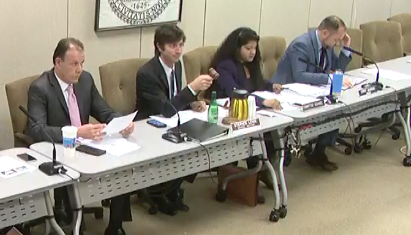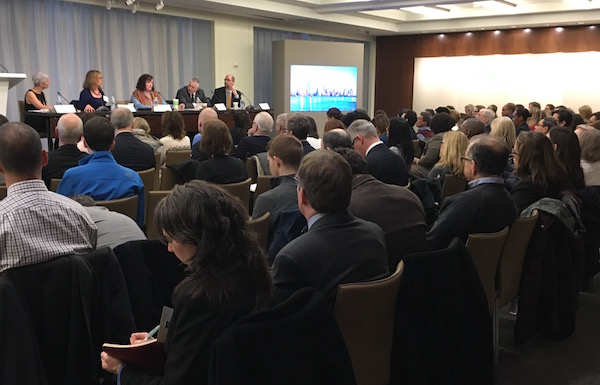Supportive Housing Loan Program- A unique innovation to finance housing for homeless New Yorkers
Sep.25.2018
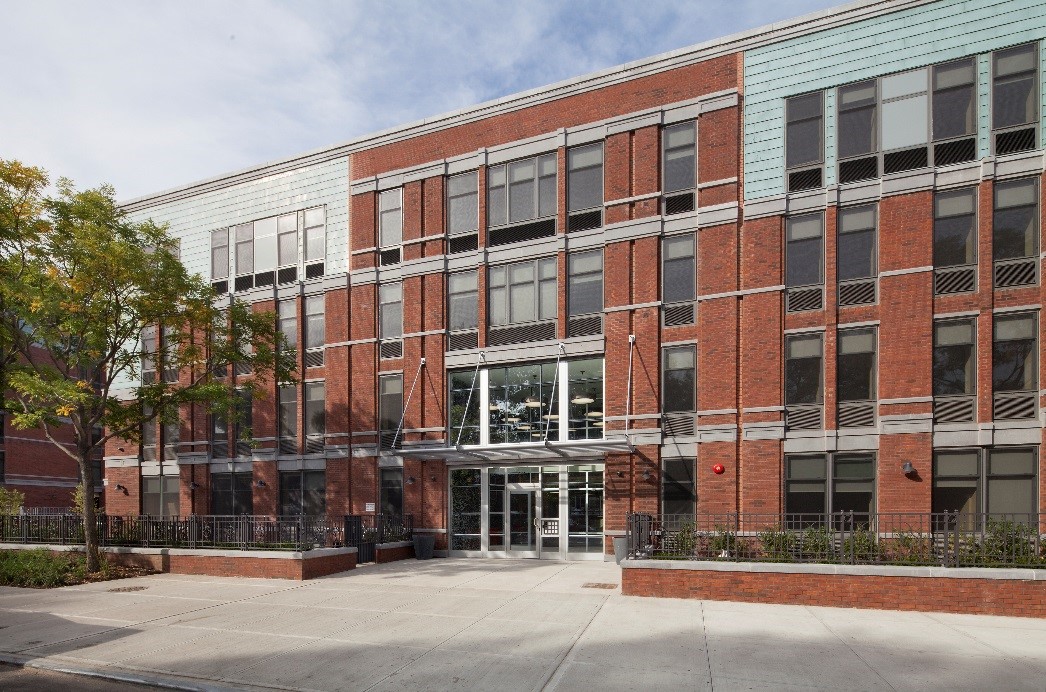
The world-renowned HPD Supportive Housing Loan Program (SHLP)– a one-stop shop that provides loans to develop supportive housing in New York City – had humble beginnings. It was started in 1988 and combined the Capital Budget Homeless Housing Program (CBHHP) and the Single Room Occupancy (SRO) Loan Program which at the time was financing the renovation of commercial SROs. Under Tim O’Hanlon during his time at the New York City Department of Housing Preservation and Development (HPD), the newly imagined SRO Loan Program grew to be the primary program the City uses to house chronically homeless New Yorkers.
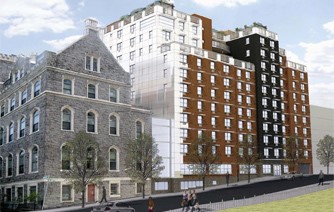 The early Supportive Housing Loan Program (then SRO Loan Program) projects were exclusively existing buildings. The program either renovated or rehabilitated the buildings so that 60% of the apartments served people in need of both housing and onsite services – such as formerly homeless individuals coping with behavioral health issues – and 40% of the apartments were designated for low-income individuals from the community. The supportive/affordable mix had numerous benefits including creating or preserving affordable housing, providing a community benefit, and ensuring buildings were integrated.
The early Supportive Housing Loan Program (then SRO Loan Program) projects were exclusively existing buildings. The program either renovated or rehabilitated the buildings so that 60% of the apartments served people in need of both housing and onsite services – such as formerly homeless individuals coping with behavioral health issues – and 40% of the apartments were designated for low-income individuals from the community. The supportive/affordable mix had numerous benefits including creating or preserving affordable housing, providing a community benefit, and ensuring buildings were integrated.
Another key element of the Program was its reliance on nonprofits: “When the City started to try to develop homeless housing on its own, parallel to CBHHP, there was too much community resistance. But when local nonprofits developed, the community went for it. They liked the accountability and the accessibility; the organizations were right there in their communities already,” said Tim O’Hanlon, Vice President, Hudson Housing Capital and Former Assistant Commissioner of Special Needs Housing, HPD.
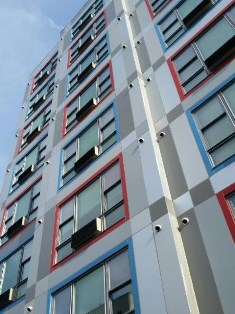 Emily Lehman, current Assistant Commissioner of Special Needs Housing, adds,“SHLP is really geared toward working with NFPs; this is a hallmark of what SHLP has always been about. The nonprofit advocate community created supportive housing in NYC, so we have tried to preserve their role to this day. One of the things that I really love about working in this program is that it feels like [the nonprofits and HPD] are all on the same team, working towards the same goal.” For-profit developers can now develop supportive housing if in joint venture with a nonprofit, further expanding the universe of actors who can work to bring supportive housing to fruition.
Emily Lehman, current Assistant Commissioner of Special Needs Housing, adds,“SHLP is really geared toward working with NFPs; this is a hallmark of what SHLP has always been about. The nonprofit advocate community created supportive housing in NYC, so we have tried to preserve their role to this day. One of the things that I really love about working in this program is that it feels like [the nonprofits and HPD] are all on the same team, working towards the same goal.” For-profit developers can now develop supportive housing if in joint venture with a nonprofit, further expanding the universe of actors who can work to bring supportive housing to fruition.
The Program allowed providers to take on massive projects, gut rehabbing dilapidated SROs and hotels, around the city, primarily in the Upper West Side and in the Times Square area. The largest project was the Times Square Hotel. Rosanne Haggerty, former Executive Director of Common Ground (now Breaking Ground) submitted an application to HPD seeking to rehabilitate the former hotel that had been used to provide degraded housing to up to 1,000 tenants becoming in what was known as a “welfare hotel” in the 1980s. Tim O’Hanlon remembers: “At the time no one was spending money to buy buildings. But the City agreed to give Common Ground $30 million to acquire the Times Square Hotel.”
The first completely newly constructed supportive housing residence was not built until the mid-1990s. Around the same time, the financing structure for supportive housing deals were beginning to diversify. SHLP funding was paired with 9% Low Income Housing Tax Credits for the first time. In 2018, HPD set-aside 40% of its 9% tax credits to fund supportive housing in New York City.
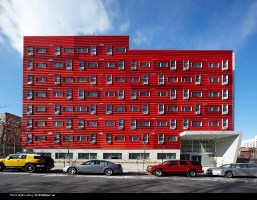 Former HPD Associate Commissioner Jessica Katz commented on the program’s flexibility and its role in building the capacity of the nonprofit development community: “Nowhere else is there a program for supportive housing that operates at this scale. One key aspect is that SHLP can operate both as a stand alone program as well as in concert with other mainstream affordable housing resources. This ensures a diversity of projects including smaller deals with smaller nonprofits as well as the ability to incorporate supportive housing within larger affordable housing projects. This builds capacity in the sector and encourages a wide variety of supportive housing options.”
Former HPD Associate Commissioner Jessica Katz commented on the program’s flexibility and its role in building the capacity of the nonprofit development community: “Nowhere else is there a program for supportive housing that operates at this scale. One key aspect is that SHLP can operate both as a stand alone program as well as in concert with other mainstream affordable housing resources. This ensures a diversity of projects including smaller deals with smaller nonprofits as well as the ability to incorporate supportive housing within larger affordable housing projects. This builds capacity in the sector and encourages a wide variety of supportive housing options.”
Since 1988, the Supportive Housing Loan Program and related historic HPD programs have produced over 19,000 supportive and affordable units.
Supportive Housing: The innovative model for ending chronic homelessness
Sep.17.2018
WSFSSH's Laura Jervis (left); St. Francis Friends of the Poor's Father Tom, Fathers John (center); Broadway Housing Community's Ellen Baxter (right).
Supportive housing had a number of mothers and fathers, all of whom were trying to help the most vulnerable New Yorkers — homeless people, people living with mental illness, the elderly, and those living the most marginalized lives — and who were all, simultaneously, coming to the same conclusion: to make a difference in the lives of the people they cared about, they could no longer just provide services. Somehow they would also need to figure out how to provide them with housing AND services.
It is hard to imagine now that there was no such thing as widespread homelessness in New York City before the late 70s. Sure, there were homeless people, but nothing like what happened when massive amounts of "housing of last resort," including rundown Single Room Occupancy (SRO) housing and dilapidated hotels, were knocked down at an alarming rate to make room for market rate housing. Since the 60s, deinstitutionalization had meant that tens of thousands of people who had only lived in psychiatric institutions joined the ranks of other very vulnerable individuals who were living in whatever housing they could afford. As this housing disappeared, people with the least resources found themselves with nowhere to go. Suddenly there were people sleeping on the streets everywhere and elderly women pushing grocery carts with their worldly goods inside.

Ellen Baxter (second row, third from left)
Advocates across the City began fighting for the most basic forms of housing, finally winning a seminal victory in the courts with the Callahan decree in 1981 guaranteeing homeless New Yorkers a right to shelter. Meanwhile, Ellen Baxter, and Kim Hopper went into the streets to interview homeless people sleeping in public places and found that many homeless New Yorkers needed more than shelter to thrive: they also needed easy access to an array of social services.
This was the conclusion that many others were coming to experientially on their own. Laura Jervis was seeing (and abhorring) the term “bag ladies” all over the Upper West Side. Elizabeth Stetcher Trebony was seeing the same thing for elderly people in Midtown. Fathers John McVean and John Felice were ministering to poor people living in SROs in Chelsea, only to find that a huge number of them had come from living in psychiatric institutions. And Stephan Russo was seeing poor tenants on the Upper West Side lose their housing to gentrification. All of these individuals were organically moving toward the same solution to all these problems — own the housing and provide necessary services.

Stephan Russo, John Tynan, Bill Traylor, Elizabeth Trebony
Ms. Trebony, who went on to create Project FIND was the first to begin the process of buying and rehabbing an old SRO and turning it into supportive housing although completing the task of turning the old Woodstock Hotel into supportive housing ended up taking nearly two decades. So the first pioneers to actually buy a building, rehab it and offer services to the most vulnerable were Father John McVean and Father John Felice of St. Francis Friends of the Poor.
The Fathers John ran the Thursday bread line at their church on 31st Street where they met many residents from the Aberdeen, an SRO in terrible disrepair one block away. As Father McVean did outreach to seniors at the Aberdeen, he discovered that there were also 150 deinstitutionalized people from psychiatric institutions, causing him to cobble together a group of volunteers to provide onsite psychiatric and social work services to residents. All went well with “The Aberdeen Project” until the owners decided they wanted to convert it into a tourist hotel.
With the imminent eviction of the vulnerable people with whom they had been working so closely, the Fathers John sat down one evening, each with a glass of scotch, put up their feet, and said "let’s buy our own hotel" having, of course, no idea what that entailed.

Father John Felice at signing of the NY/NY Agreement; Father John McVean (left) and Father John Felice (right)
They soon found out. With the help of friends and supporters, they found a building on East 24th Street and raised enough money to buy it. Their Provincial administration then provided the money needed for renovations, HRA, OMH and psychiatric staff from Bellevue provided on site services. So it was that on November 24th, 1980, the first St. Francis Residence opened and the first supportive housing was born.
Ms. Trebony, in the meantime, started Project FIND as part of a national demonstration project on elderly advocacy and was an early vocal opponent of the destruction of West Side SROs. In 1975, the agency obtained a management and operating lease on the Woodstock Hotel, a former luxury hotel located in the heart of Times Square that had fallen into deplorable condition with only 80 of its 320 rooms habitable. Through the blood, sweat, and tears of hundreds of federally funded low-income city workers in the CETA Maintenance program, Project FIND rehabilitated the building from a nearly abandoned eyesore into permanent housing for over 200 seniors. A Senior Center on the second floor of the hotel was added in 1977 which included a social service case management component. Project FIND purchased the building in 1979 but the struggle to make it fully habitable extended until 1995.
Meanwhile, Ellen Baxter was meeting with and following in the footsteps of the Fathers John. She formed a new nonprofit called the Committee for The Heights Inwood Homeless (CHIH) (now called Broadway Community Services) designed to provide a secular model that garnered investment from every level of government.
In the early 1980s, CHIH transformed an apartment building on West 178th Street into 55 units of supportive housing finally opening in 1986. While the St. Francis residences had relied on simple financing packages, renovation of this building, known as “The Heights,” required an extremely complex combination of funding sources, including a low interest HPD Participation Loan from the city (for capital and acquisition costs), a state Special Needs Housing Act grant, private bank loans, and federal tax credits.

Ellen Baxter (left) and Tony Hannigan (third from right and above)
Operating costs for The Heights were subsidized through a new federal subsidy which provided rental support for low-income tenants. But the Heights introduced another innovation: the notion of partnering with another non-profit to provide onsite services. Those were to come from a partnership with Columbia University Community Services (CUCS) (now called the Center for Urban Community Services).
CUCS President & CEO Tony Hannigan’s story began a few years out of graduate school in 1981 when, he was tasked with a field initiative of locating vulnerable homeless single people staying in SROs — and remembers that 40% of SRO housing stock had been lost to gentrification at that time. As Ellen was working on transforming the Heights, CUCS applied to the Department of Mental Health to provide services to the tenants.
Another motivating force behind the birth of supportive housing was coming from communities’ desire to preserve and revitalize what they perceived as rapidly disappearing affordable housing. Thus, in 1981, when the West 87th Street Block Association heard that a deteriorating SRO, Capitol Hall, might be replaced with luxury housing, they approached Goddard Riverside Community Center and The Settlement Housing Fund to help preserve it. Goddard purchased the property in 1983 and started rehabbing it the following year into 202 supportive housing units.
Meanwhile, also on the Upper West Side, Laura Jervis was doing outreach to elderly people living in SROs there, having recently graduated from seminary. The now-retired West Side Federation for Senior and Supportive Housing (WSFSSH) Executive Director witnessed first-hand the fear people had to leave their rooms and the impact of isolation on elderly communities. She formed a coalition of community groups and religious institutions from the West Side to help these individuals, and WSFSSH was born. Their first building was The Marseilles, which Laura insisted on staffing with a social worker. “It’s hard to imagine today, but having social services on-site in senior housing was a radical idea in 1980!”
Laura Jervis maintains that seniors and those who have experienced the trauma of homelessness need more than just housing — her advocacy message from the start. “Over the years, in all of our buildings, it is the sense of community that is developed by residents and staff that has been the key to the success of our mission.”
Among the most ambitious and prolific early adopters of supportive housing in the early 1980s was Catholic Charities Brooklyn and Queens who melded their mission of serving the most vulnerable and combined it with the Church’s significant real estate portfolio by converting three vacant schools and a convent into 225 units of supportive housing called Caring Communities. The organization put together twelve separate funding sources to finance the project, including an HPD Participation Loan, federal Section 8 Moderate Rehabilitation rental support and state Homeless Housing Assistance Program funding.
Another significant contribution from Catholic Charities Brooklyn and Queens was as a crucible for a generation of powerful advocates: Executive Director John Tynan had the great good fortune to have Bill Traylor, Connie Tempel, and Laura Mascuch all working for him in housing development or management.
As these buildings were opening, however, the question of who could live in them came to the forefront. Thus, in the mid-1980s, Stephan Russo of Goddard Riverside Community Center called together other early pioneers to ensure that homeless neighbors and community members were going to continue to be served in this new model of housing, leading to the now-normal 60/40 mix of individuals referred from the shelters and low income individuals from the community. The coalition became the SRO Providers Group, which then met regularly to share promising strategies and to lobby city and state government in a single, unified voice.
The SRO Providers Group evolved into the Supportive Housing Network of New York.
Committee on General Welfare Examines NYC 15/15 Progress in City Council Hearing
May.03.2018
On April 24, 2018, the Committee on General Welfare, chaired by Council Member Stephen Levin, held an oversight hearing to examine the progress of the City’s new supportive housing program, NYC 15/15. The four-hour long hearing focused on the progress being made towards achieving the goal of 15,000 supportive housing units in 15 years and included testimony on Intro 147, a local law introduced by Council Member Levin, to amend the administrative code of the City of New York in relation to reporting on supportive housing placements.
City Council Speaker Corey Johnson initiated the hearing with positive remarks on the effectiveness of the supportive housing model, and his support for it.
“Supportive housing, which began in the 1970s in response to the homelessness crisis in New York City, is considered the most successful existing model for ending chronic homelessness among vulnerable populations,” he said.
He also expressed his commitment to ending homelessness and urged all those present to do everything they can to develop more supportive housing as quickly as possible. “There are homeless people everywhere, living on the streets, and it’s heartbreaking,” Johnson said.
Commissioner Steven Banks of the Human Resources Administration (HRA), Maria Torres Springer, Housing Preservation and Development (HPD), and Molly Park, Deputy Commissioner for Development at HPD were the first to testify at the hearing.
Commissioner Banks and Commissioner Torres Springer gave an update on the progress towards NYC 15/15 and discussed the issues slowing down progress. Of the 15,000 units in the plan, half are planned as scattered site supportive housing and half as part of single-site, or congregate, residences.
“Through the 15/15 plan thus far, we have made 1,426 awards to providers, including 505 scattered and 921 congregate units,” Commissioner Banks stated. “337 clients have already moved into units, 170 more are already linked to units and are in the process of moving in,” he added.
Commissioner Banks also identified the tight market for apartments at affordable rents, which have a vacancy rate of 1.15%, as one of the main reasons slowing down the pace of scattered site supportive housing.
Commissioner Torres Springer too described the long lasting benefits of supporting housing in her testimony, including the fact that for every supportive housing unit tax payers save $10,000 per year in public resources. She then turned the conversation back to the council members and asked for their help to overcome the biggest challenge facing any new supportive housing: building community support.
“We need your help in combating the misperceptions associated with homelessness and supportive housing. Communities across the city need to know that they cannot be opposed to the siting of homeless shelters and to the siting of permanent housing for formerly homeless and supportive populations that would ultimately reduce the need for shelters. One is a key solution to the other, and opposing them both gets us nowhere,” she said.
In addition to Speaker Johnson and Chair Levin, present council members included Adrienne E. Adams, Diana Ayala, Vanessa L. Gibson, Mark Gjonaj, Barry S. Grodenchik, Brad S. Lander, Antonio Reynoso, Rafael Salamanca, Jr., Ritchie J. Torres and Mark Treyger.
Most of the Council Members present voiced their eagerness to develop more supportive housing.
“First of all, as you’ve heard from the Speaker, this body is committed to assuring that we help develop as many supportive housing units as possible. So, we not only talk the talk, but we walk the walk and you’ll have great partners moving forward,” Council Member Gjonaj assured the audience.
The Network’s Executive Director, Laura Mascuch, who also serves as the Co-Chair of the New York City Coalition on the Continuum of Care (CoC), the planning body that serves to allocate HUD funding for homelessness and permanent supportive housing programs also testified at the hearing. She spoke about the recommendations from the Mayor’s Task Force on Supportive Housing, which were incorporated into NYC 15/15, significantly improving the model and ensuring its success in reducing homelessness. She also reiterated the need for support from council members in overcoming community opposition.
“Apart from the dearth of affordable appropriate land on which to build supportive housing, the single greatest impediment to developing new residences is local opposition, often based in misinformation and fear. We look to the City Council for leadership in this area,” she remarked.
The hearing concluded with Committee Chair Stephen Levin emphasizing the need to move people out of the shelter system and into supportive housing and working more diligently to ensure that all who do need supportive housing, get it.
Project Renewal’s Super-Green Bedford Green House Groundbreaking
Nov.28.2017
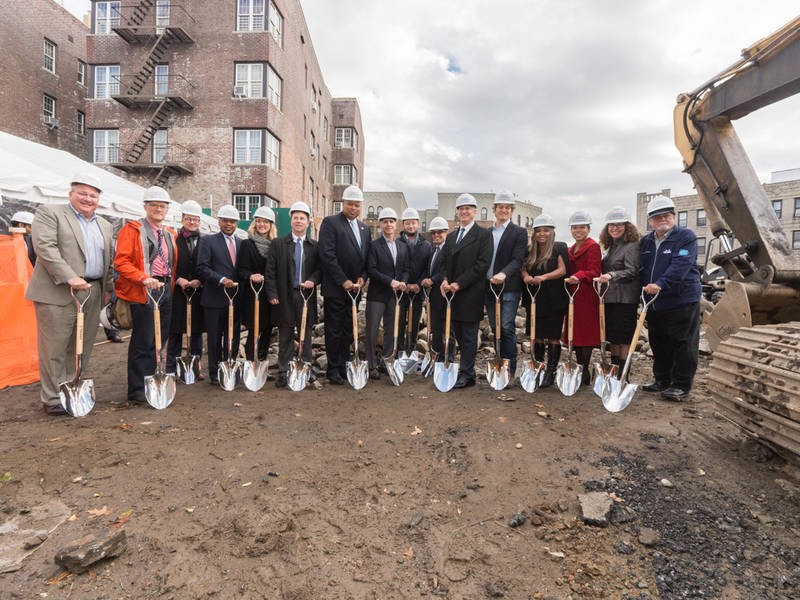
Breaking ground for Bedford Green.
Fifty city, state, federal, and private sector partners gathered on the construction site of Bedford Green House, an extraordinary new affordable/supportive housing development for the Bedford Park section of the Bronx that will feature, a living green façade, an interior green wall, and a rooftop aquaponic system to raise fish and produce in addition to a teaching kitchen, a community playground and a landscaped garden. The 13-story Bedford Green House will be built in two phases, with 118 units going up now and 90 units later. But that’s not all that’s new and exciting about the project, as Project Renewal CEO Mitchell Netburn pointed out in his welcoming speech: “Bedford Green House continues the organization’s 50-year history of “firsts” including the first outreach to homeless alcoholics, the first non-hospital detox, and the first shelter for LGBTQI young adults. Bedford Green House will be Project Renewal’s first project to serve families.”
On hand to celebrate was Lynne Patton, HUD Regional Administrator for New York and New Jersey who quoted project consultant Jonathan Rose: “today we stick shovels in the ground to build gardens in the sky.”
HPD commissioner Maria Torres-Springer pointed out that the project embodies the Mayor’s newly released Housing 2.0 Plan, both by creating much needed affordable and supportive housing and through its dependence on a mission-based nonprofit as its developer/owner.
Assembly Member Jose Rivera strongly supported the project and the mission behind it, telling attendees that he too had been homeless when his family first came here, “and, if it wasn’t for people like you…”
Also deeply moved was Chris Johnson, the CEO of Hollister, the contractor for Bedford Green House, who told participants that the project was an embodiment of the precepts his mother instilled in him: “You have to give to live.”
Fred Harris of Jonathan Rose quipped, “If it takes a village to develop affordable housing, it takes a medium sized city to develop supportive housing.”
Luminaries included Office of Temporary and Disability Assistance (OTDA) Commissioner Sam Roberts, NYC Housing Development Corporation (HDC) President Eric Enderlin, Bank of America’s Todd Gomez, Bronx CB 7 Chair Adeline Santiago, Deutsche Bank’s John Kimble, and CSH’s Jen Trepinski.
On site services will include primary medical care, mental health treatment and support, substance use disorder counseling and treatment, conflict resolution, domestic violence counseling and support, family reunification services, horticultural therapy, nutritional counseling, healthy cooking workshops, occupational therapy, STD / HIV prevention, treatment, and support, and respite / alternative caregiving. On site services will be funded by the NYC Department of Health and Mental Hygiene and the Human Resources Administration.
Bedford Green House was financed under HDC’s Extremely Low- and Low-Income Affordability (ELLA) program and HPD’s Supportive Housing New Construction program. The total development cost for the project is over $58.8 million. HDC provided volume cap bonds, recycled tax-exempt bonds, and nearly $7 million in corporate reserves. HPD provided $8.85 million in City subsidy, inclusive of $2 million in HUD HOME funds and Low-Income Housing Tax Credits (LIHTC), Bank of America served as tax credit investor and provided the construction letter of credit. NYS OTDA provided funding under the Homeless Housing and Assistance Program (HHAP). Additional grant funding was provided by TD Bank and Deutsche Bank Foundation. CSH provided predevelopment loans.
Bedford Green House’s development team is led by Mitchell Netburn and Sam Wells at Project Renewal, and consulting services were provided by Jonathan Rose and Dale White at The Jonathan Rose Companies. Hollister Construction Services is serving as the general contractor. Architectural design services are provided by Andrew Knox of Edelman Sultan Knox Wood Architects.
Network/CUCS trainings announced for 2017-2018
Nov.27.2017
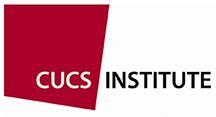 The Network’s collaboration with the Center for Urban Community Services (CUCS) Institute continues this year with an exciting roster of upcoming trainings.
The Network’s collaboration with the Center for Urban Community Services (CUCS) Institute continues this year with an exciting roster of upcoming trainings.
Next up this year is a training on Foundations of Motivational Interviewing, Part 1:
Motivational Interviewing (MI), developed by Millerand Rollnick, is an intervention that helps people recognize and address problem behavior (present or potential), and is intended to help resolve ambivalence and to get a person moving along the path to change. MI serves as an important prelude to other treatment and services by creating an “openness” to change, which paves the way for further important therapeutic work. This training provides an introduction to the basic principles and skills associated with MI including OARS (Open Questions, Affirmation, Reflective Listening, and Summary Reflections), expressing empathy, rolling with resistance, and avoiding common roadblocks to change. It also offers a foundation for Motivational Interviewing Part 2, which expands these skills into actual “change talk” and promotion of commitment to change.
This training is accredited as a New York State Social Work Continuing Education Course and OASAS Certified. You can register for this training here, and use the code SHNNY-MI-12-12-17 as the coupon code for your membership discount.
Founded in 1979, the Center for Urban Community Services (CUCS) is a comprehensive human service agency and the nation’s largest provider of supportive housing social services. The CUCS Institute is a leader in the provision of training to professionals in New York City and nationally. The trainers are at the forefront of emerging research and train on a range of topics related to housing and homelessness, behavioral health, criminal justice and clinical practice. The CUCS Institute is recognized as a continuing education provider by the New York State Education Department’s State Board for Social Work for licensed social workers and by New York State’s Office of Alcohol and Substance Abuse Services (OASAS).
For more information on registering or training content, please contact CUCS Institute.
Partnering with Churches to Develop Supportive and Affordable Housing
Nov.22.2017

Network Executive Director Laura Mascuch and the panelists at our event on working with mission-driven nonprofits to develop supportive and affordable housing.
Some fifty members of the faith community gathered at New Greater Bethel Ministries (NGBM) in Queens to hear how their churches can work with mission-driven nonprofits to develop supportive and affordable housing. Invited by Dominic Dummett of Signature Building Consultants, hosted by NGBM’s Pastor John Boyd and organized by the Network, the gathering featured presentations by the Network’s Laura Mascuch, HPD’s Theresa Cassano, Association for Neighborhood and Housing Development (ANHD)’s Benjamin Dulchin and RiseBoro’s Scott Short.
In his opening remarks, Dominic referenced the context for the day’s conversations – namely that churches, plagued by near daily offers by developers have been making ill-advised deals to sell their properties. By partnering with mission-driven nonprofits to develop affordable and supportive housing, however, faith leaders can both gain assets and further their mission to care for “the least of these.”
Laura kicked off the morning by talking about supportive housing’s deep roots in the faith community, having been invented and promulgated by faith leaders in the early 80s and having, at its core, the intention of helping the most vulnerable among us achieve independence and a life of dignity in the community. She also informed those assembled that between the City’s and State’s commitments to supportive housing, there are significant resources available to develop residences in New York.
HPD’s Theresa Cassano then presented on the numerous programs the City has to encourage the development of supportive and affordable housing. She also walked attendees through the concrete steps faith-based institutions need to take in order to start the process.
ANHD’s Benjamin Dulchin then spoke briefly about the importance of working with organizations that share the same values as faith based organizations hold, ticking off the benefits of churches partnering with community-based nonprofit developers. ANHD recently published a white paper about the fact that buildings developed by nonprofits have a deeper level of affordability than those built by for-profits.
Scott Short, of RiseBoro (formerly Ridgewood Bushwick Senior Center) then presented on a number of actual projects that have been developed or are in process of being developed as a result of partnerships with faith-based organizations. In one instance, the church sold its property outright, in another the church was a true Joint Venture partner and in a third the church receives a new worship space and additional rentable commercial space and is providing a long-term ground lease.
A lively well-informed question and answer period followed including questions about the Attorney General’s role in these deals (the AG must approve any transfers of church properties) and how churches can know whether they’re being taken for a ride (“get a good lawyer”)– and what are the different levels of affordability? (ANHD passed out cheat sheets on Area Median Income).
Thank you to everyone who participated and especially to our host, Pastor Boyd and the amazing people at New Greater Bethel Ministries.
FIRST NYC ESSHI-FUNDED PROJECT OPENS ON STATEN ISLAND!!!
Oct.24.2017
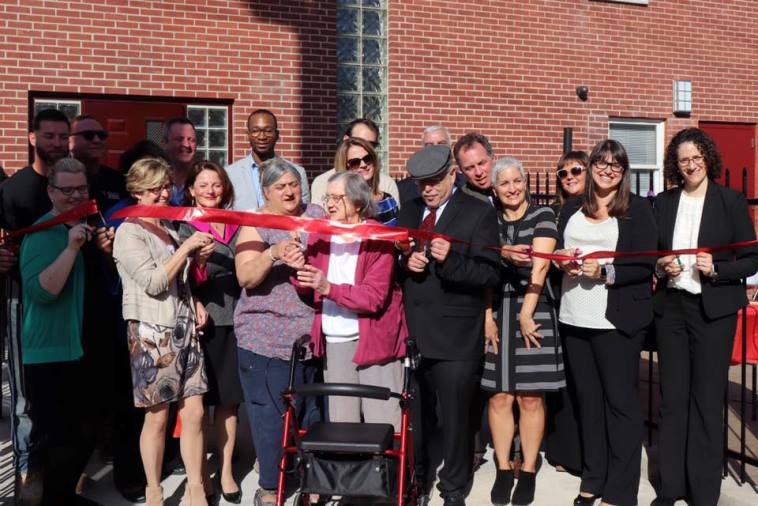
Cutting the ribbon at 411 Vanderbilt.
On an unseasonably warm sunny morning in late October, some fifty friends, staff, partners and well-wishers gathered in the front yard of 411 Vanderbilt to celebrate the long-awaited opening of Project Hospitality’s (PH) first single site supportive housing residence in its 35 year history of serving homeless people on Staten Island. The project was also the first New York City project funded through the state’s Empire State Supportive Housing Initiative (and only the second supportive housing residence to open on Staten Island). Both Project Hospitality’s first Executive Director -- now CEO – Rev. Terry Troia and its new Executive Director Carrie Bloss were on hand to do the honors, as they helped cut the ribbon on 16 beautiful new apartments for formerly homeless individuals.
Project Hospitality Board Chair Rabbi Gerald Sussman told the story of the organization’s twenty five year effort to build 411 Vanderbilt, which included multiple owners reluctant to sell, a long stretch in which the building was inhabited by squatters, and a fire that pretty much destroyed the building. Through the vision and tenacity of Project Hospitality and the project’s architect Amie Gross, its contractor Mammoth Construction, as well as important funders, 411 Vanderbilt literally rose from the ashes.
Kimberly Smith of the Office for Temporary and Disability Assistance (OTDA) was not the first or last speaker to acknowledge the difficulties in developing this project. Ms. Smith and OTDA’s Dana Greenberg presented Project Hospitality with a certificate of recognition from Commissioner Roberts as well as greetings from the Governor. Project Hospitality, for their part, gave out plaqued bricks to significant project partners including CSH, Capital One Richmond County Savings Foundation and the US Department of Housing and Urban Development (HUD).
CSH’s Kristin Miller – whose organization had loaned PH the money to acquire the property -- noted that it had taken 25 years to make a loan for supportive housing on Staten Island, and predicted the next loan would not take as long.
Capital One’s Heather Gershen pointed out that it “takes a village” not just to support our most vulnerable neighbors, but to support the groups that support them as well.
Arthur McCarthy of Mammoth Construction told listeners that he never forgot where he came from – a modest upbringing -- and that his “heart goes out to people who haven’t been as lucky.” He then proceeded to offer a check for $2,500 in his recently passed father’s name to be used to fill the refrigerators of the 16 people who would be moving into 411 Vanderbilt over the next few days.
Also on hand were representatives from Richmond County Savings Foundation, HUD, OASAS, the Staten Island Foundation, the Network and HSU.
411 Vanderbilt was funded by HUD, OTDA, CSH, Deutsche Bank, Capital One and the aforementioned foundations. Service funding will come from the NYS Department of Health.
NYC 15/15 Panel with HRA, HPD, and DOHMH
Oct.11.2017
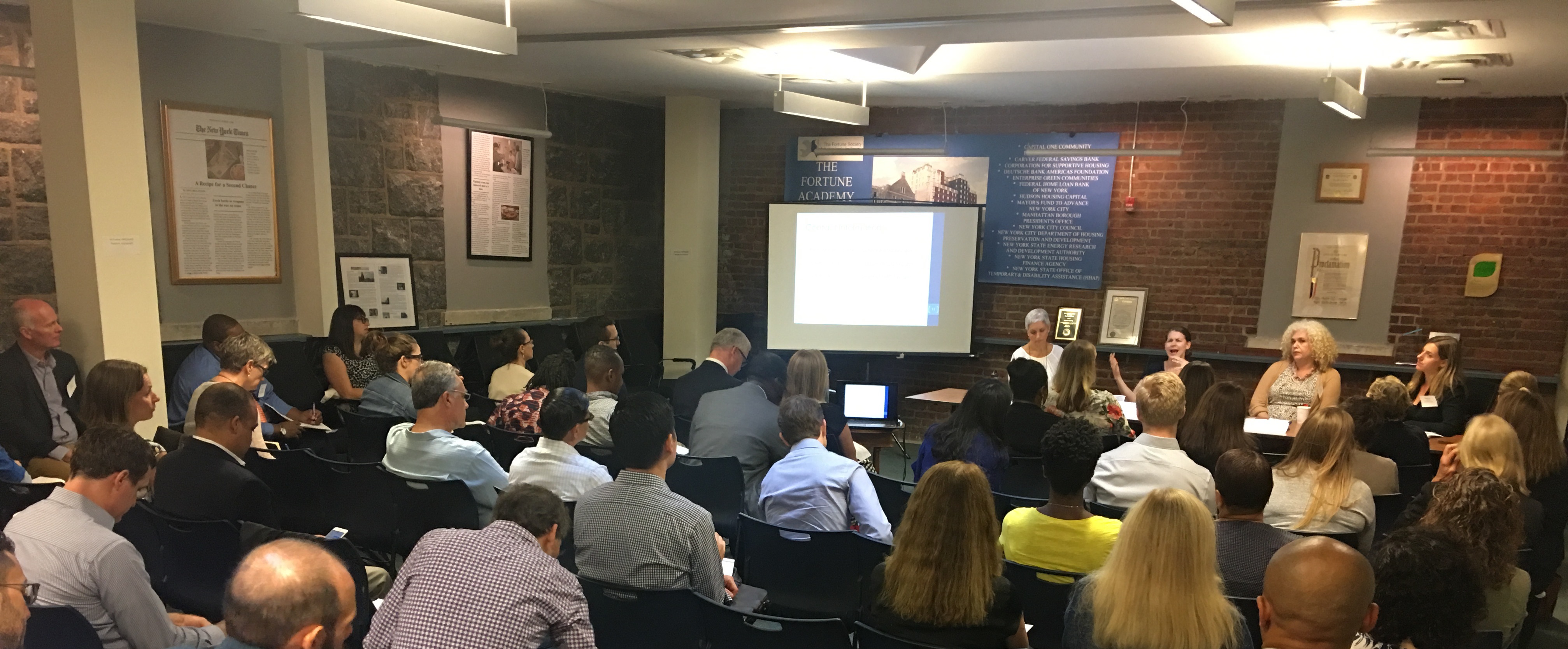 A full house at the Network's NYC 15/15 panel.
A full house at the Network's NYC 15/15 panel.
Some 90 providers, investors, lawyers and city and state government representatives gathered at Fortune Society’s Castle Gardens on September 28th to hear about the City’s NYC 15/15 initiative which seeks to create 15,000 new units of supportive housing over the next fifteen years. The panel, moderated by our own Laura Mascuch, featured HRA Deputy Commissioner of Supportive/Affordable Housing & Services Kristin Misner Gutierrez, HPD Deputy Director of the Supportive Housing Loan Program Theresa Cassano, and DOHMH Senior Director, Office of Housing Services Gail Wolsk. Of special interest to those in attendance was information about the City’s newly minted rental assistance program which will be separate from service contracts and entirely funded by the City’s tax levy funds.
Stanley Richards of Fortune Society welcomed guests with a wish that the residence in which the panel was situated served as an inspiration to those developing the next wave of supportive housing.
Kristin Misner Gutierrez presented a quick overview of NYC 15/15 – both the congregate and the scattered site programs. She summarized the six month process through which the City and the provider community used data and on-the-ground experience to develop recommendations for improving systems and rates, recommendations that the City then integrated into NYC 15/15. She also laid out the City’s expectations as to how many units will go to which populations, both in terms of scattered site and single site units.
Gail Wolsk then summarized some of the innovations in service contracts that are new under NYC 15/15, including 1:15 caseloads, programs for families that must include services for children, and the requirement that services be evidence-informed.
Theresa Cassano then took over, laying out for the first time the City’s rental assistance program that will be paired with the NYC 15/15 service contracts. She explained that both service and rental assistance contracts can be used in a number of HPD programs beyond the Supportive Housing Loan Program, including ELLA and Mix and Match. The new subsidy will closely resemble Project Based Section 8, although, because the funding is all City tax levy, the subsidy will not trigger Davis-Bacon. Ms. Cassano told attendees that HPD has been meeting with both providers and investors about the subsidy program to address questions and concerns.
The presentation was followed by a lively question and answer period covering a range of concerns about both the scattered site and the single site programs. Panelists also stayed after the session ended to answer participants’ questions one-on-one.
Stay tuned for a Guest Blog Post from the three participants answering frequently asked questions.
The Network’s Getting to 35K Initiative
Sep.25.2017
The Network's recent panel on the Empire State Supportive Housing Initiative (ESSHI).
Ever since last year, when the state and city committed to create 35,000 new units of supportive housing in two separate initiatives over the next fifteen years, the Network has focused on supporting our community in meeting this unprecedented opportunity. 27,500 of these units will be single-site. The state’s commitment of 20,000 of these units – the Empire State Supportive Housing Initiative (ESSHI) – will be developed through an annual statewide RFP process, while New York City’s 7,500 single-site units – part of NYC 15/15 – will be developed through an open, rolling RFP. The total number of units is three times that of any previous commitment.
The Network has embarked on a multi-year Getting to 35K Initiative for our nonprofit community. Last winter, we surveyed members to gauge their interest in developing supportive housing and to identify any impediments to the process. The results of this survey pointed us towards the types of trainings, convenings, and connections our nonprofit members needed to move forward.
In the first eight months of 2017, we convened our state partners for an ESSHI question and answer session which was attended by 100 members of our community. In February, we piloted a small, hands-on training on how to structure a joint venture with representatives from ShermanLaw, Bank of America, and Richman Housing Resources. Throughout the spring, we presented at various forums to help faith-based organizations partner with affordable and supportive housing developers, including a gathering we hosted with the Mayor’s Center for Faith and Community Partnerships. Eight of our annual conference workshops were aimed at helping the supportive housing community implement NYC 15/15 and ESSHI. And in July, we held our first Joint Venture ‘mixer’ – bringing together for-profit developers and nonprofits interested in partnering to develop supportive housing…in a bar!
Over the next several months, we will be holding a number of events across the state on topics including financing a tax credit deal, joint ventures, and HCR’s unified funding process. While we will be sending out specific invitations to each of these events, we wanted to keep you abreast of what we’re planning to offer.
We would love to hear your thoughts on what else the Network could do to help us all meet our collective vision: ending chronic homelessness in New York State through the creation of sufficient supportive housing.
The Network would like to thank our funders for the Getting to 35K Initiative, without their support this work would not be possible: Bank of America, Capital One, Deutsche Bank, New York Community Trust, the Oak Foundation, Robin Hood, JP Morgan Chase, and the van Ameringen Foundation.
Comunilife and NYC Health + Hospitals Break Ground on Comunilife Woodhull
Sep.01.2017

Breaking ground on Comunilife Woodhull.
On August 16th, elected officials, funders, and other partners joined Comunilife and NYC Health + Hospitals to break ground on a new supportive/affordable housing building on the campus of Woodhull Hospital.
Of the residence’s 89 studio units, fifty-four will be set aside as supportive housing for patients of NYC Health + Hospitals/Woodhull who have behavioral health issues and a history of homelessness. The other 35 units will be available to low-income individuals.
The building will include a multi-purpose community room, a community kitchen, a laundry room, bike storage, and a computer room. The property will feature a 2,400-square-foot landscaped backyard, as well as a 2,300-square-foot front yard along Park and Throop Avenues.
Woodhull Hospital CEO Gregory Calliste opened the program congratulating the health and housing stakeholders on bringing the project to fruition. He introduced NYC Deputy Mayor for Health and Human Services Dr. Herminia Palacio who remarked, “Health does not happen within the four walls of a doctor’s office, it happens foremost at home. These supportive housing units will go a long way to helping the residents who live here be their healthiest selves.”
Dr. Palacio was followed by Comunilife’s Board Chair & CEO, Dr. Rosa Gil, who noted that the project had been a dream for many years.
Stanley Brezenoff, Interim President and CEO of NYC Health + Hospitals commented “Our mission is reflected in this building and our commitment to the community.”
“This development will have the power to transform lives,” said New York State Homes and Community Renewal Commissioner RuthAnne Visnauskas. “I am proud to join our fellow partners in the public and private sectors who combined their dedication and expertise on behalf of the 89 residents who will call Comunilife Woodhull their home.”
Other distinguished speakers included NYC Housing Preservation and Development (HPD)’s Emily Lehman, Council Member Robert Cornegy, NYS Assembly Member Tremaine Wright, Council Member Antonio Reynoso as well as Deputy Borough President Diane Reyna and a representative of Congresswoman Nydia Velasquez's office.
Funding for the project came from NYS HCR and NYC HPD. Hudson Housing Capital was the project syndicator, and Sterling National Bank and Chase were lenders. New York State Energy Research and Development provided additional grant funding. On site supportive services will be funded by the NYC Department of Health and Mental Hygiene and provided by Comunilife. Monica Lopez Architects is the project architect and Mega Contracting will provide general contracting services.

